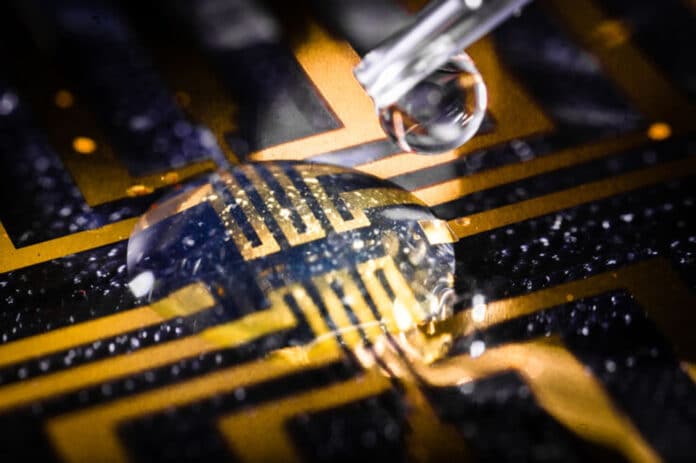There are challenges in making materials that are soft enough to be interfaced with living tissue but firm enough to be inserted into the body. Researchers at Linköping, Lund, and Gothenburg universities in Sweden have successfully grown electrodes in living tissue using the body’s molecules as triggers. Their findings could lead to fully integrated electronic circuits forming in living organisms.
Understanding intricate biological processes, battling brain illnesses, and creating future machine-human interactions depend on linking electronics to biological tissue. Conventional bioelectronics, on the other hand, have a fixed and static design that makes it challenging, if possible, to integrate with living biological signal systems. These devices were created concurrently with the semiconductor industry.
Researchers developed a method to dynamically create soft substrate-free conducting materials within the biological environment to address this incompatibility. Using the method, it is possible to create soft, substrate-free, electronically conductive materials in living tissue.
Researchers injected a gel consisting of enzymes as the “assembly molecules” to grow electrodes in the tissue of zebrafish and medicinal leeches.
Xenofon Strakosas, a researcher at LOE and Lund University and one of the study’s main authors, said, “Contact with the body’s substances changes the structure of the gel and makes it electrically conductive, which it isn’t before injection. Depending on the tissue, we can also adjust the composition of the gel to get the electrical process going.”
Endogenous chemicals produced by the body are sufficient to cause electrode development. In contrast to other research, there is no requirement for genetic change or external signals like light or electrical energy. The Swedish researchers are the first to accomplish this in the entire world.
Scientists further demonstrated that the method could target the electronically conducting material to specific biological substructures, creating suitable nerve stimulation interfaces. In the future, it might be possible to create fully integrated electronic circuits inside biological things.
During experiments at Lund University, the researchers successfully formed electrodes in zebrafish brains, hearts, and tail fins and around the nerve tissue of medicinal leeches. The electrode formation had no effect on the animals, and neither did the gel that was injected. One of the many challenges in these trials was to consider the animals’ immune systems.
Professor Roger Olsson at the Medical Faculty at Lund University said, “By making smart changes to the chemistry, we could develop electrodes accepted by the brain tissue and immune system. The zebrafish is an excellent model for studying organic electrodes in brains.”
Hanne Biesmans, a Ph.D. student at LOE and one of the main authors, said, “Our results open up completely new ways of thinking about biology and electronics. We still have many problems to solve, but this study is a good starting point for future research.”
Journal Reference:
Xenofon Strakosas, Hanne Biesmans, Tobias Abrahamsson, et al. Metabolite-induced in vivo fabrication of substrate-free organic bioelectronics. Science 2023. DOI: 10.1126/science.adc9998
